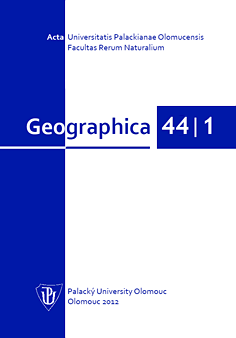Home >> Research >> Journal >> Geographica 44/1 >> Geographica 44/1
Geographica 44/1 (2013)
|
Acta Universitatis Palackianae Olomucensis |
 |
| Back to contents | Zpět na obsah |
Ethno-demographic development in Bosnia and Herzegovina in 1971–1991 and its propensity for ethnic conflict
Ondřej Žíla
Full text: ![]() PDF colour (3 MB),
PDF colour (3 MB), ![]() PDF press (3 MB)
PDF press (3 MB)
Received: January 7, 2013
Accepted: June 20, 2013
Abstract
Different population dynamics of the three main nations of Bosnia and Herzegovina during the era of Yugoslav federation raised uncertainty and tensions in this socialist republic. The differences in the demographic development of Muslims, Serbs and Croats began to clearly manifest especially during the years 1971–1991. These demographic changes in Bosnia and Herzegovina in this period are important to perceive as some of the crucial elements which, together with some other negative factors (primarily the economic decline, paralysis of the federal government, mounting political tensions and nationalism) during the 1980s, were the cause for the interethnic tension to build up. Due to the consequences of different population dynamics we tried to identify the regions where the representation of individual nations was transformed. Such regions, during the monitored period, registered increasing interethnic rivalry. In these regions it is possible to apply the so called Ethnic Competition Theory. The moment the diverse demographic dynamics distinctly increase ethnic tensions, and cause mutual conflicts in the monitored area to escalate it is possible to quantify the rate of this ethnic rivalry in a specific region with the help of recorded changes of local numerical representation of individual ethnic groups. With the use of three selected indicators (index of ethnic competition, index of demographic disadvantage and relative growth rate) we can measure susceptibility to conflict. This quantitative analysis of the ethnic structure and population growth should partially clarify reasons for the subsequent ethnic cleansing in the specific regions during the civil war in Bosnia and Herzegovina.
Key words
Bosnia and Herzegovina, ethno-demographic development, ethnic competition theory, measuring demographic interaction, scenarios of demographic dynamics
Last modified 31/08/15 | ↑ top